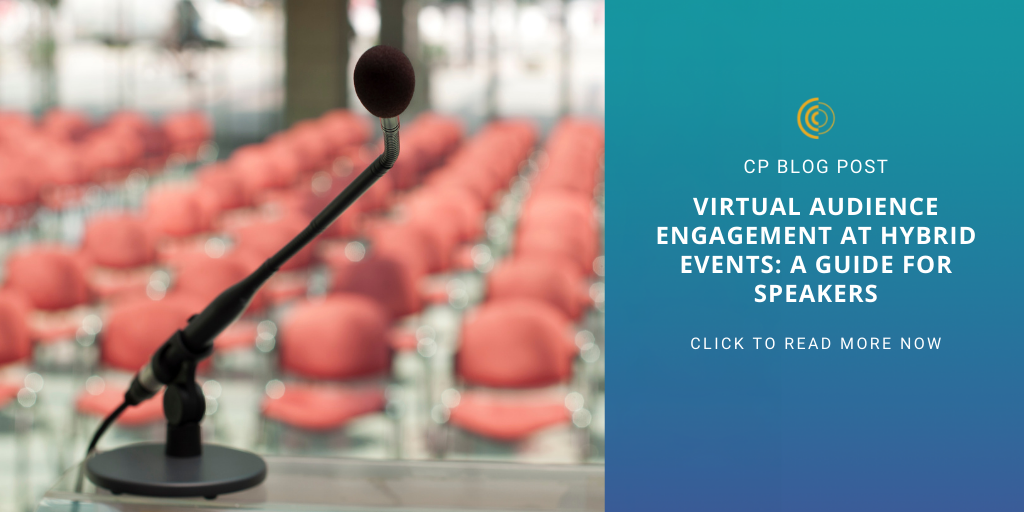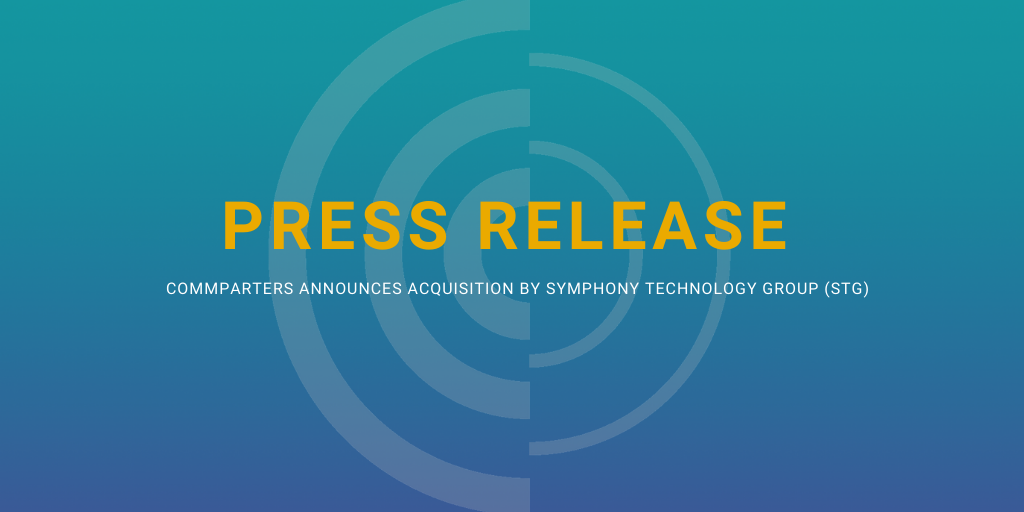
Virtual Audience Engagement at Hybrid Events: A Guide for Speakers
Hybrid events are on the rise, and this should come as no surprise. They allow you to roll all the perks of a purely in-person or virtual approach into one unified educational experience. But they do come with a potential pitfall: failing to deliver on virtual audience engagement.
Today, we’ll share a few tips to help hybrid event speakers captivate their virtual audience from afar. But first:
Why Virtual Attendee Engagement Matters for Hybrid Events
You don’t need us to tell you that audience engagement is crucial to the success of any event—be it in-person, virtual, or hybrid. So why should we address engaging virtual attendees at hybrid events in particular?
As the world of events went virtual in response to COVID-19, we saw that this approach was not a temporary inconvenience to tolerate. On the contrary, it’s something we should embrace. Going virtual lets us reach new audiences, opening the doors for unprecedented levels exposure and engagement.
The potential of hybrid events is even greater. But as speakers face in-person spectators once more, they run the risk of forgetting about what will likely be the majority of their audience: those tuning in virtually.
In other words: failing to engage remote attendees does a disservice to the largest contingent of your hybrid event. Reach, impact, and—ultimately—ROI will suffer.
Don’t worry. Over the past year and longer, we’ve learned what it takes to command the attention of remote attendees. And we won’t leave the tools and techniques we picked up by the wayside as events hybridize.
An effective speaker can combat a sense of voyeurism and FOMO among remote attendees. With these tips in mind, you’ll be equipped to engage a virtual audience at your next hybrid event.
Our MediaCenter2.0 tool allows your speakers to engage with audiences both remote and virtual, but here are a few non-technology based methods to keep your learners and attendees engaged.
Acknowledge Virtual Attendees Early
There are two kinds of teachers.
There are those who show up to class right on time and head out the moment the bell rings. Then there are the teachers who arrive to class early, strike up conversations with students, and invite them to their office for a friendly chat after class. Which do you suppose is the more effective instructor?
Ultimately, this is more than a matter of friendliness; it’s about building engagement. The simple act of acknowledgment prevents virtual audiences from feeling like onlookers.
Perhaps you aren’t a teacher by trade. But everyone who engages in public speaking is, in that very moment, teaching.
Take a cue from the playbook of the best teachers. Take time at the beginning of your hybrid event, and take a moment to acknowledge the faces behind the screens. Engaging in a brief dialogue with the virtual attendees will pay dividends.
Break the Ice
But how exactly should you go about acknowledging them? Try a few icebreakers.
The mere mention of the term ‘icebreaker’ can illicit moans and groans from an audience. Don’t describe them as such. Instead, find a more organic way to break the ice.
Educations works best when it’s a dialogue. Communication should flow both ways, if only for a few moments. To get the dialogue going, start out with a couple questions directed at virtual attendees:
- Where are you tuning in from?
- What’s the weather like there?
- What topics do you hope we’ll cover today?
Sure, our first two question seem a whole lot like small talk. That’s because they are. And is there anything wrong with that?
When the world went digital due to COVID-19, we found that what we missed most was human interaction. We could live without the commute, but we grew to miss little exchanges in the halls or around the water cooler. And yes—we even missed small talk.
We don’t want to wax nostalgic. But we do want to emphasize this: small talk is innately human. And when your virtual attendees recognize you as human, they’ll feel more engaged.
Most hybrid event configurations keep the microphones of virtual attendees muted. So how will they respond to your questions?
Chat Box & Polling
Any good hybrid event configuration should have an engagement tool. This could take the form of a polling feature or simply a chat box.
Before the event begins, find out what engagement tools you have at your disposal and give some thought to how you’ll employ them. You should consider using them in support of your icebreaker questions and sprinkling them throughout the presentation as well.
Let’s return to the classroom analogy. Think back to your days in school. On the (rare, we’re sure) occasions when your attention started to wane, few things could jolt you back to reality like the teacher calling on you.
The aim of the chat box and polling features isn’t exactly to put your learners on the spot. Instead, they engage your virtual audience by injecting an element of interactivity and community into the hybrid event experience.
When implemented well, both of these tools will make your remote attendees feel every bit as involved as in-person participants.
Make Eye Contact
Alright, alright. You can’t truly make eye contact with your virtual audience. But you can approximate the sensation of eye contact by occasionally addressing the camera rather than in-person attendees.
Honestly, this may be the most difficult thing for speakers to adjust to. Directing your gaze evenly among the audience is one of the most foundational tenets of good public speaking. It can be counter-intuitive to address an inanimate object such as a camera when there sit real, living and breathing people right in front of you.
But this is something you’ll have to get over if you hope to keep virtual attendees engaged. Keep the location of the camera in mind, and take the time to look at it occasionally—especially when responding to remote questions and comments.
Don’t overdo it, though; just an occasional glance at the camera can go a long way.
Tell Your Story
We’ll close with a bit of advice that will help you engage audiences in general—whether dealing with a hybrid audience or not.
After all, the best way to keep virtual attendees engaged is simply great public speaking. If you can captivate a live audience right in front of you, with a little guidance you’ll have no problem doing the same to audiences both near and far.
To engage your virtual audience, take part in the oldest art form: storytelling.
Time and time again, neurologists have proven that our brains are most engaged when invested in a narrative. This is why you’ll be on the edge of your seat during an action-packed movie, but fall asleep on your text books.
Narratives are a tried-and-true engagement tool that every speaker should employ. They need not take up the majority of your presentation to be effective. But they’re a great place to start.
Use a story to showcase your humanity and reel your audience in. Just make sure it ties in to the ultimate point you’re trying to make!
Create Engaging Hybrid Events with CommPartners
CommPartners powers enduring educational experiences. Our award-winning Elevate LMS gives you all the tools you need to maximize the impact of your next hybrid event. Allow our expert Event Producers to make sure it goes off without a hitch.
When you’re ready for unprecedented levels of reach, revenue, and retention, we can make it happen with our e-learning and events expertise.
Let’s start a conversation. If you want to learn more about Elevate LMS or our managed hybrid event services, contact Meghan Gowen at Meghan.Gowen@gocadmium.com. Keep up with us on Twitter and LinkedIn.


